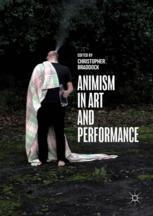

Most ebook files are in PDF format, so you can easily read them using various software such as Foxit Reader or directly on the Google Chrome browser.
Some ebook files are released by publishers in other formats such as .awz, .mobi, .epub, .fb2, etc. You may need to install specific software to read these formats on mobile/PC, such as Calibre.
Please read the tutorial at this link: https://ebookbell.com/faq
We offer FREE conversion to the popular formats you request; however, this may take some time. Therefore, right after payment, please email us, and we will try to provide the service as quickly as possible.
For some exceptional file formats or broken links (if any), please refrain from opening any disputes. Instead, email us first, and we will try to assist within a maximum of 6 hours.
EbookBell Team

4.7
26 reviewsThis book explores Māori indigenous and non-indigenous scholarship corresponding with the term ‘animism’. In addressing visual, media and performance art, it explores the dualisms of people and things, as well as 'who' or 'what' is credited with 'animacy'. It comprises a diverse array of essays divided into four sections: Indigenous Animacies, Atmospheric Animations, Animacy Hierarchies and Sensational Animisms. Cassandra Barnett discusses artists Terri Te Tau and Bridget Reweti and how personhood and hau (life breath) traverse art-taonga. Artist Natalie Robertson addresses kōrero (talk) with ancestors through photography. Janine Randerson and sound artist Rachel Shearer consider the sun as animate with mauri (life force), while Anna Gibb explores life in the algorithm. Rebecca Schneider and Amelia Jones discuss animacy in queered and raced formations. Stephen Zepke explores Deleuze and Guattari's animist hylozoism and Amelia Barikin examines a mineral ontology of art. This book will appeal to readers interested in indigenous and non-indigenous entanglements and those who seek different approaches to new materialism, the post-human and the anthropocene.